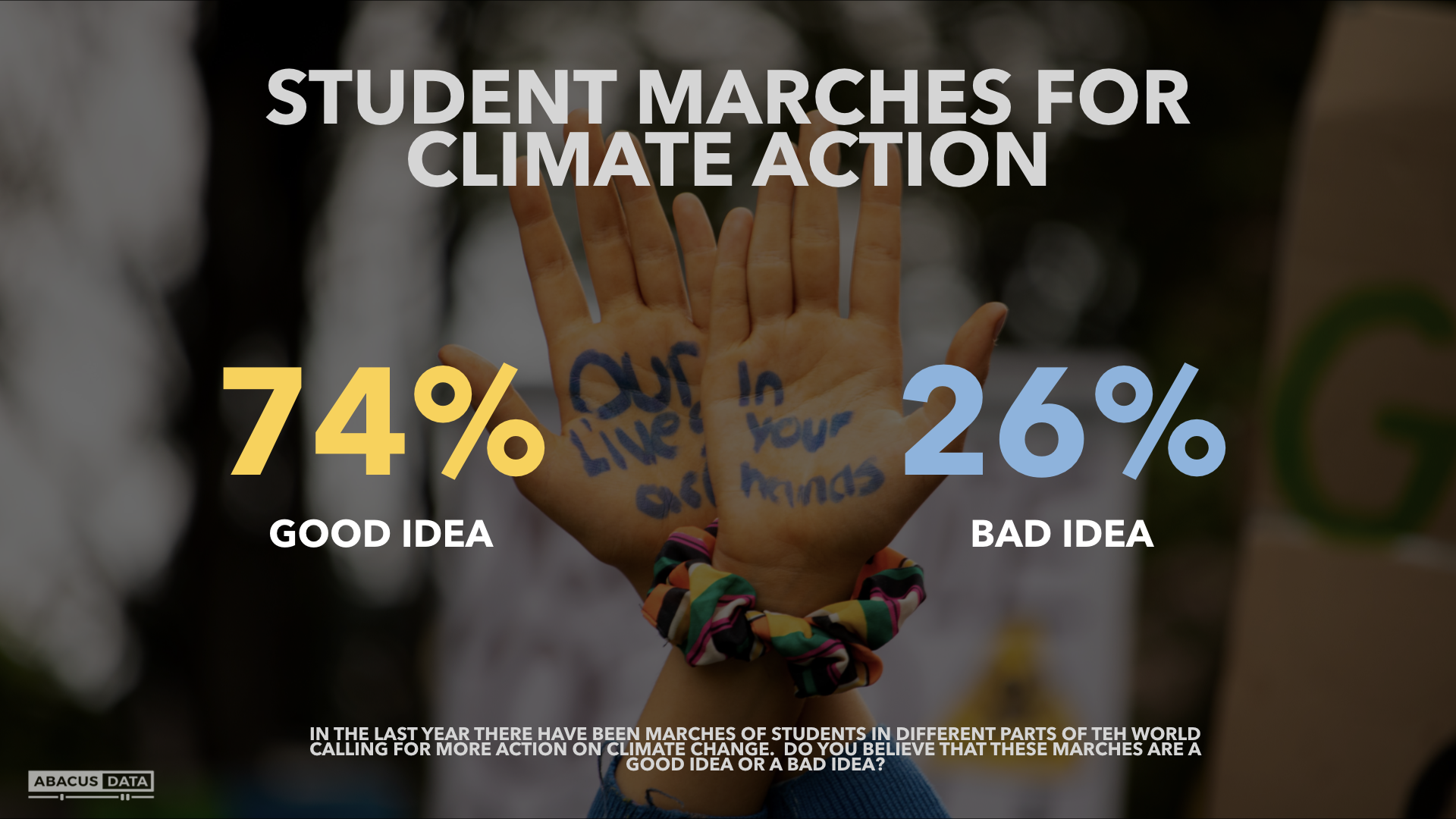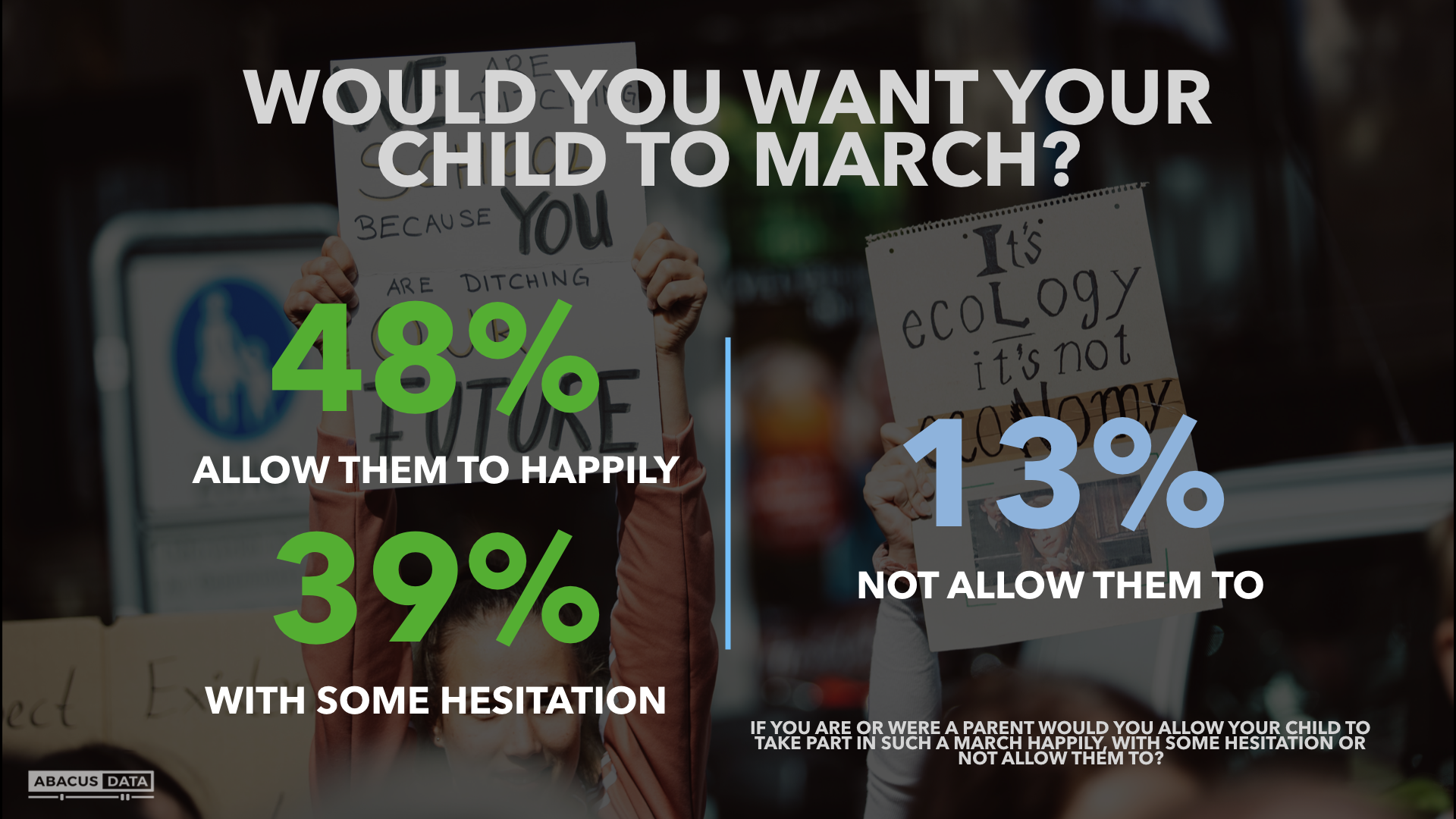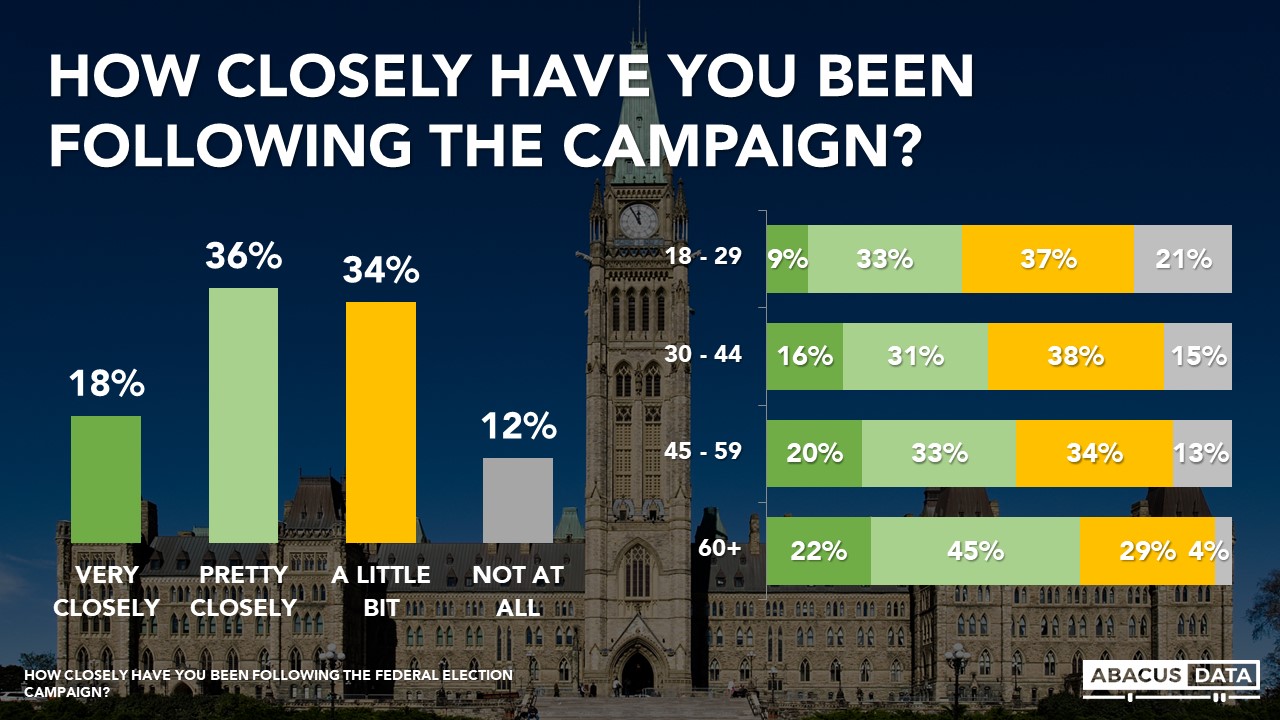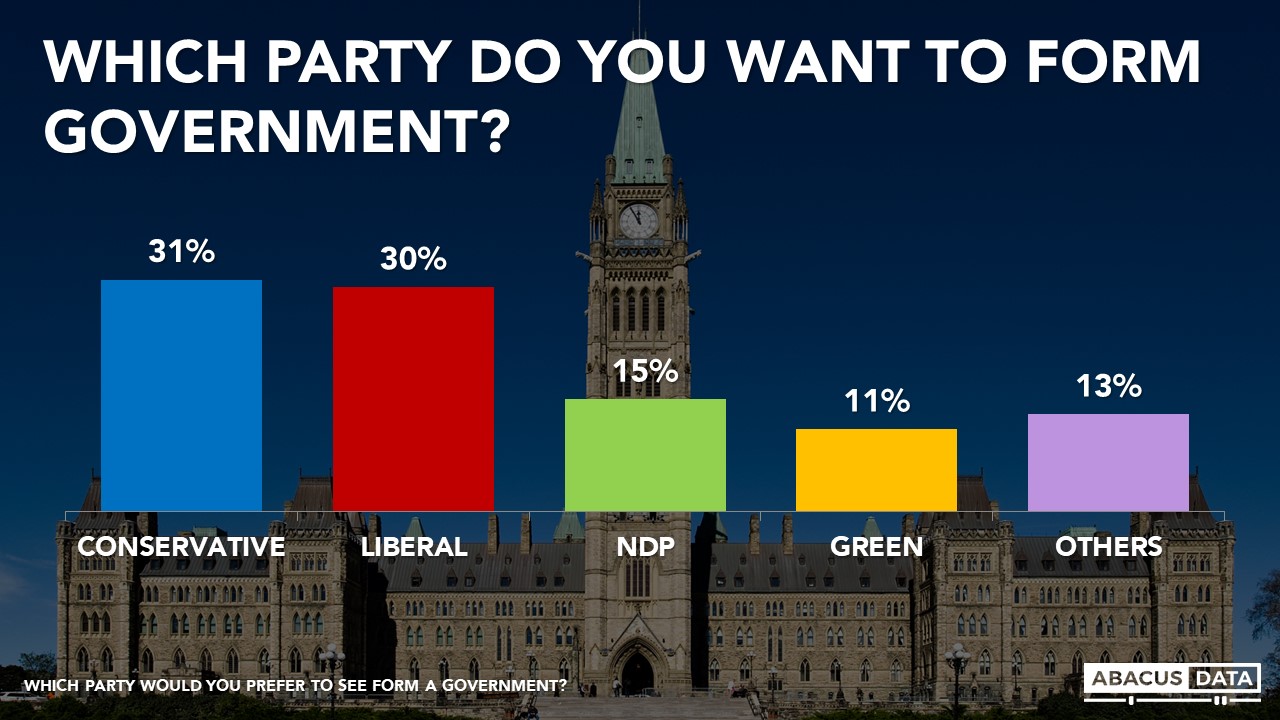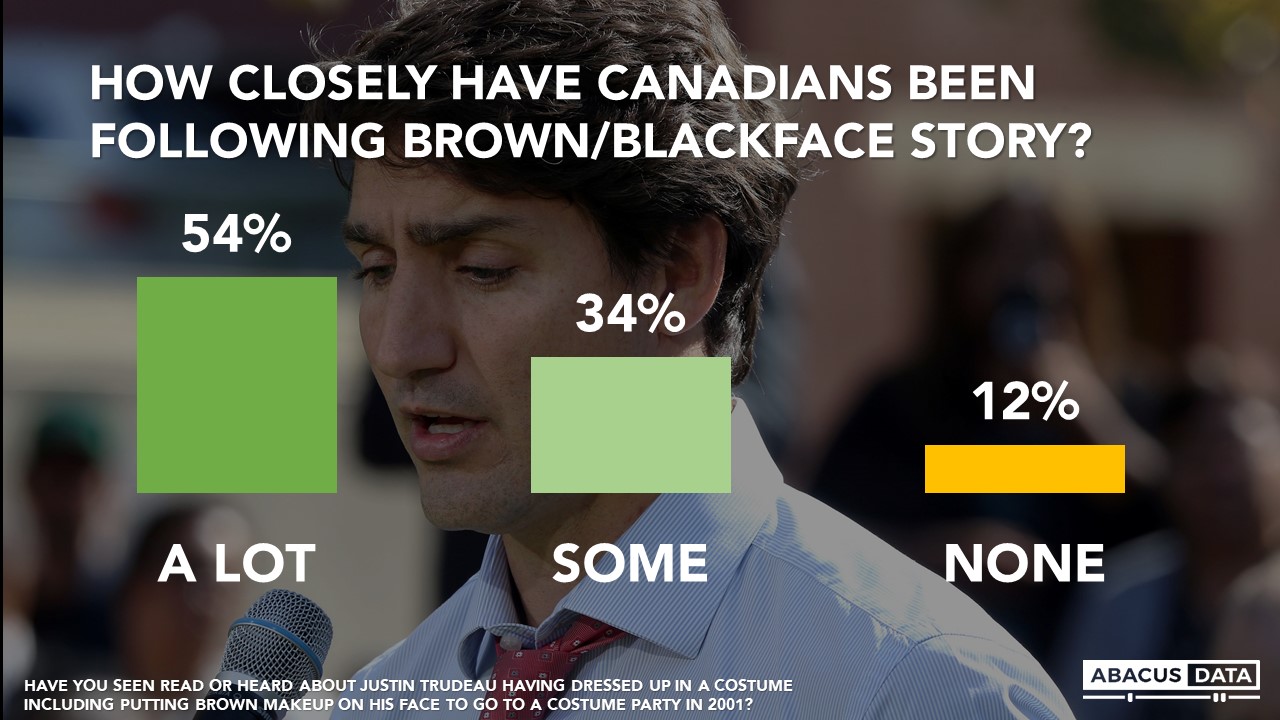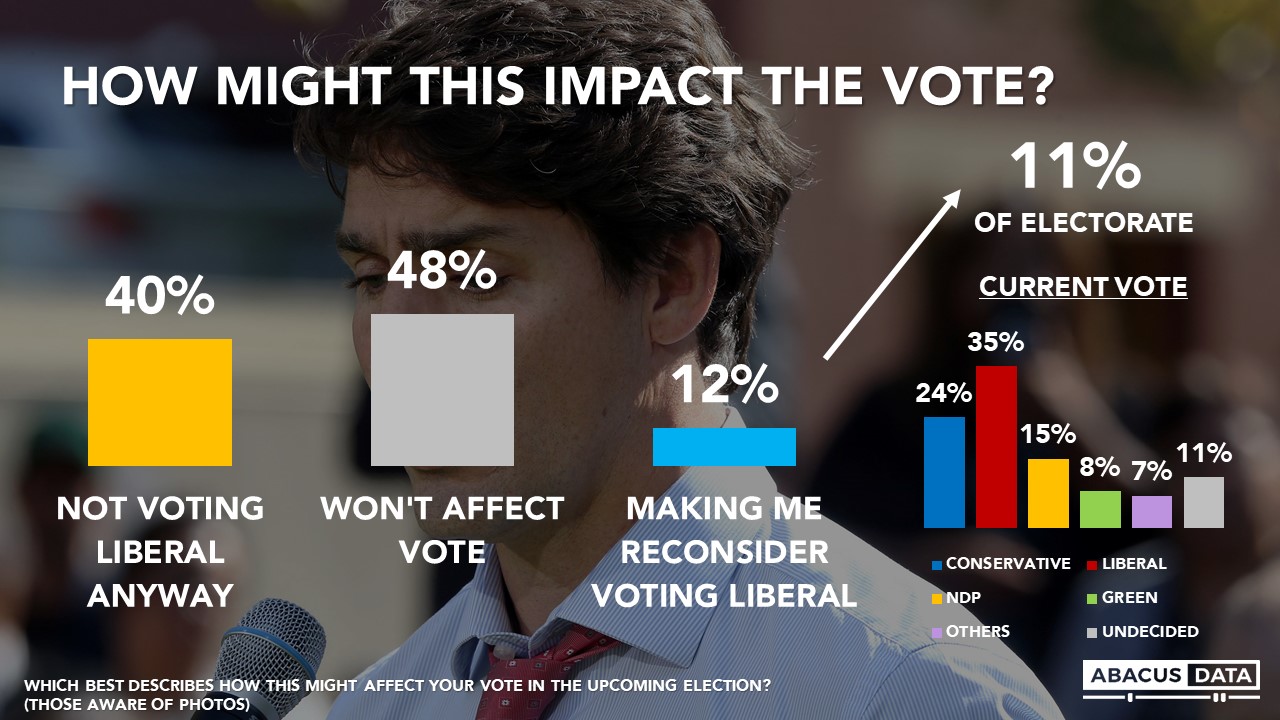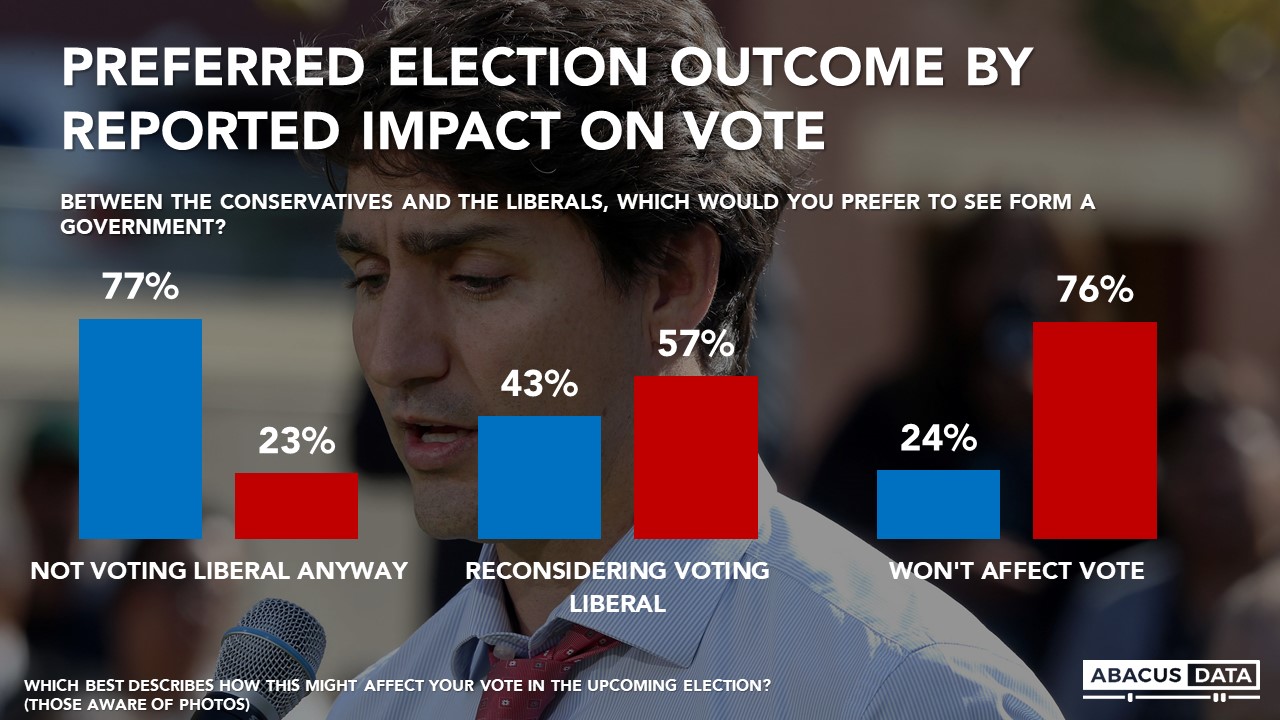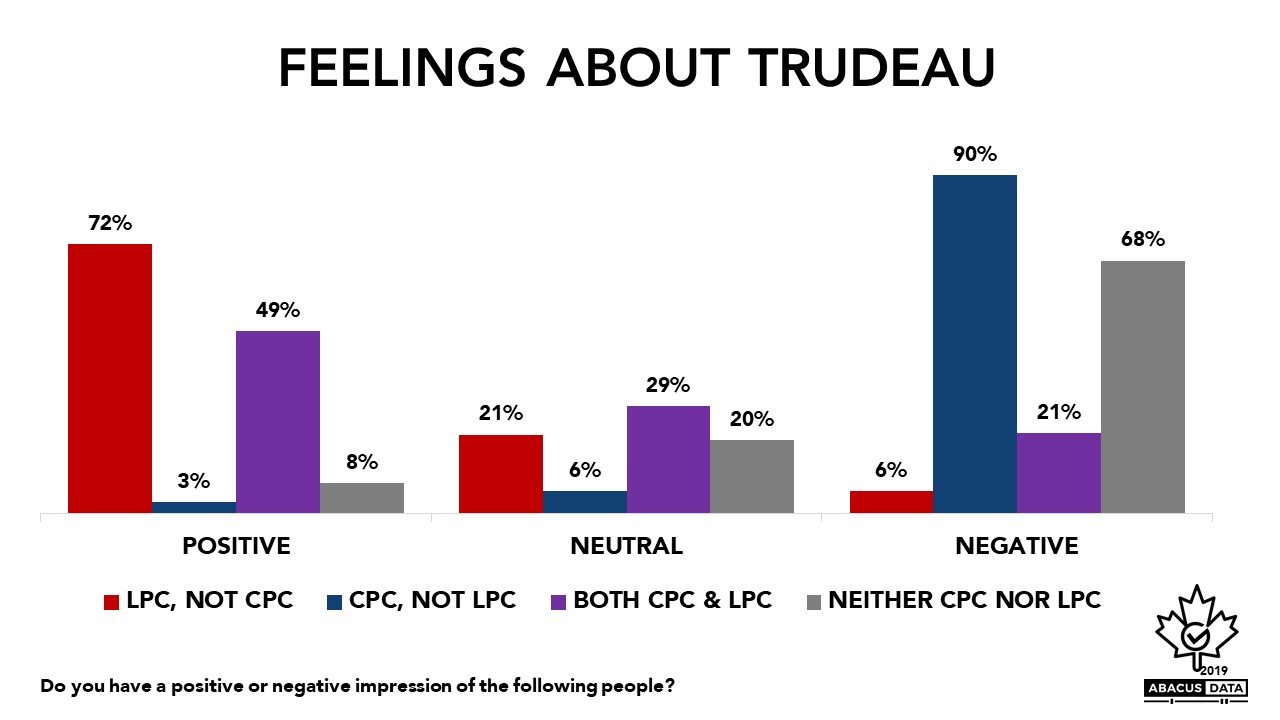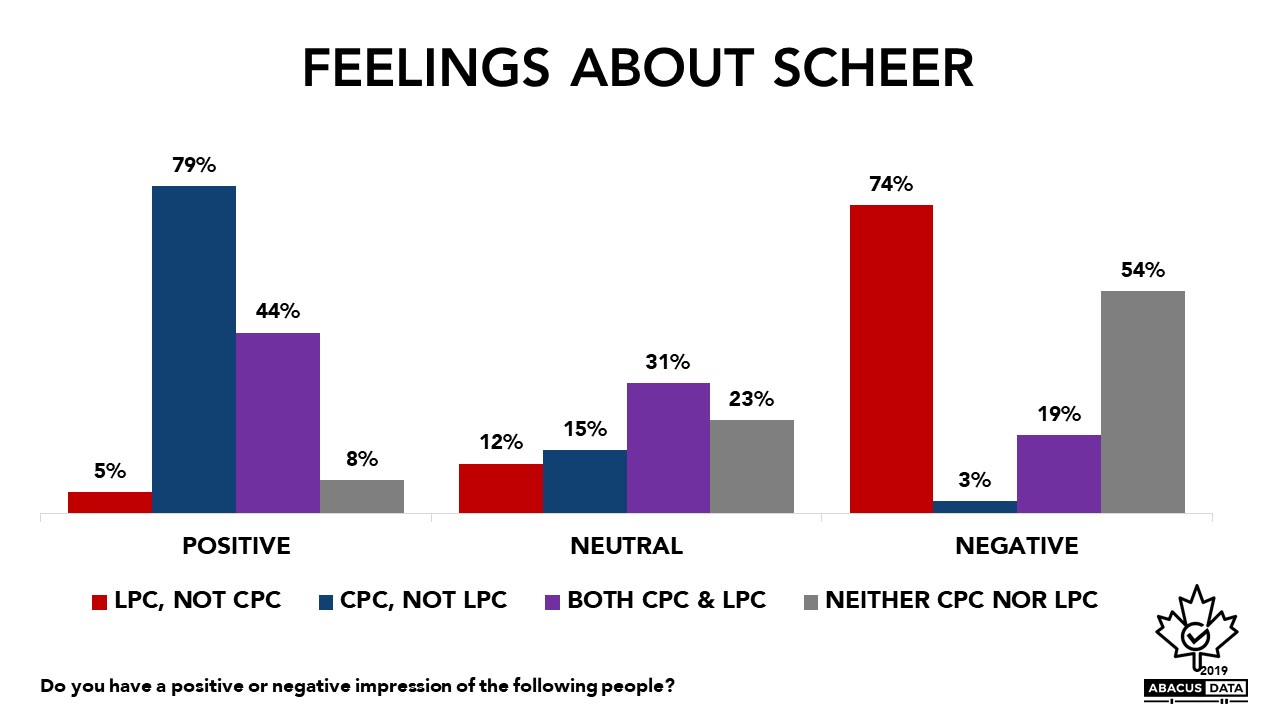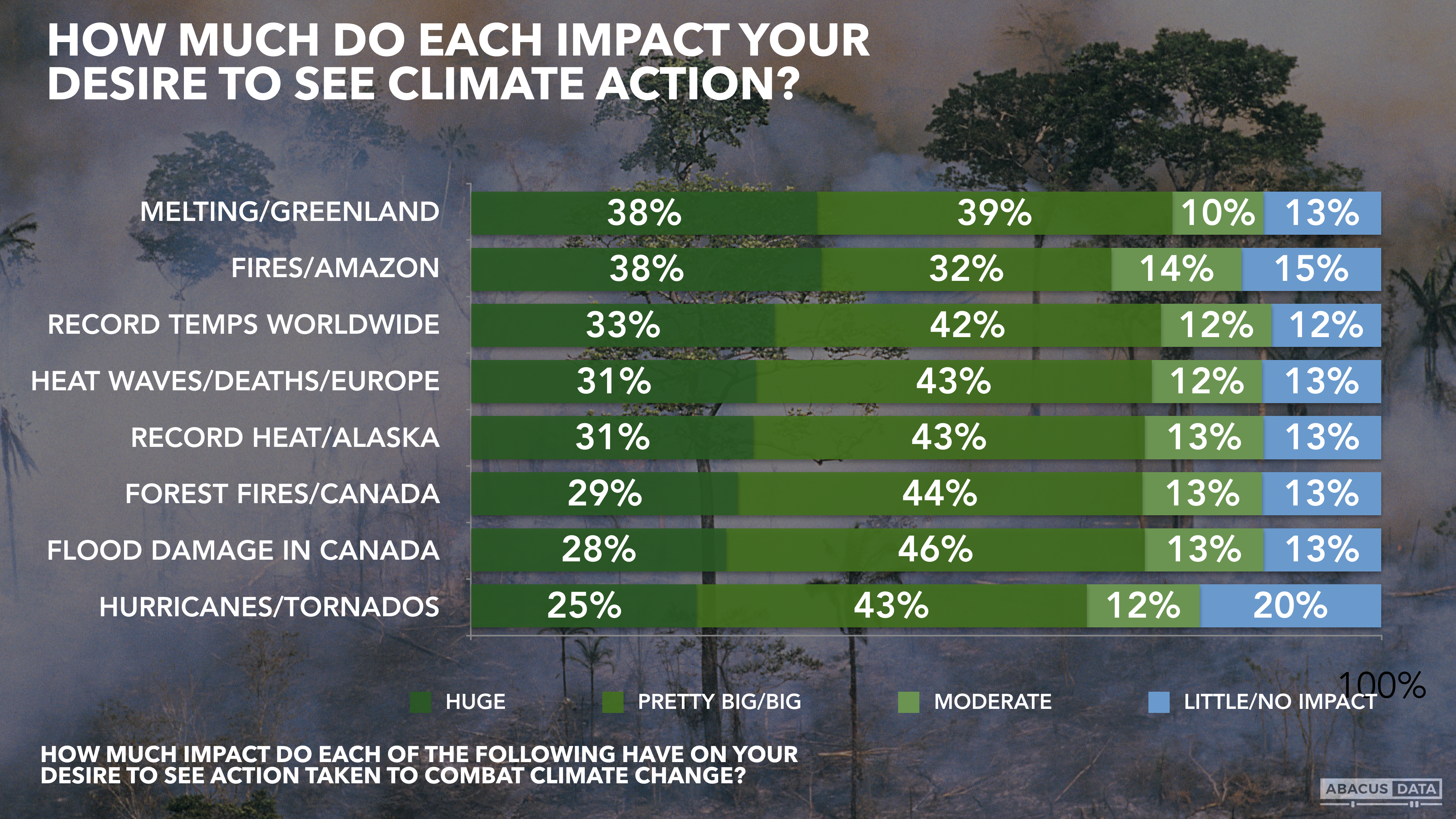Election Poll: A better week for Trudeau’s Liberals
By Bruce Anderson & David Coletto
We’ve completed another election survey this week. Here’s a snapshot of what we are seeing:
1. The national race remains tight, but the Liberals are 3-points better positioned than last week, with 35% support, while the Conservatives have dropped a point to 33% (that shift is within the margin of error). The NDP at 15% (unchanged) and the Green Party 10% (unchanged).
2. Regionally, the Liberals have a 16-point lead in Atlantic Canada, a 17-point lead in Quebec, a 7-point lead in Ontario, and trail by wide margins in the Prairies. In BC, the Liberals have opened up a 7-point lead with 33% support followed by the Conservatives at 26% and the NDP at 25%, the Greens further back at 12%. In Quebec, the Bloc Quebecois is polling at 20%, 2-points back of the Conservatives at 22%.
3. The Liberals lead among those aged 18 to 29 (by 18 over the Conservatives) and by 7 among those aged 30 to 44. The Liberals and Conservatives are tied among those aged 45 to 59 while the Conservatives lead by 11 among those aged 60 and over. Over the past week, the Liberal vote share among younger voters has surged to 42%, a 9-point increase.
4. In the past, educational attainment was a key driver in vote intentions, but our latest survey finds less division. The Liberals and Conservatives are tied among those with high school or less and among those with college education. Among those with a university degree, the Liberals lead by 10 points. In the past, the Conservatives could count on more support among those with high school or less. That gap appears to have closed over the past few weeks.
5. Justin Trudeau’s personal ratings have recovered a bit. His positives are up 3-points to 34%, and his negatives are down 2 to 47% for an overall net -13 image score. Mr. Trudeau’s net favourability is -11 in BC, -13 in Ontario, +1 in Quebec. He is -13 among women and +5 among voters under 30.
6. Andrew Scheer saw his numbers go in the opposite direction this week. His positives dropped a point to 31%, and his negatives are up 3-points to 42% for an overall image score of -11. His approval rating is -12 in BC, -15 in Ontario and -15 in Quebec. It is -20 with under 30 voters and -18 among women.
7. Jagmeet Singh had a better week this week, with his positives rising 6-points to 31% and his negatives dropping 4-points to 24% for a +7 overall. He is +10 in BC, +9 in Ontario, +9 in Quebec, +12 among women and +31 among voters under 30.
8. Elizabeth May had a slightly improved week with her positives up 2 and her negatives down 2 for an overall net image score of +9. She is +12 in BC, +10 in Ontario, +9 in Quebec, and +21 in Atlantic Canada.
9. Maxime Bernier is underwater everywhere at -32 nationally, -29 in BC, -29 in Ontario, -38 in Quebec, and – 4 among self-described right of centre voters. He is -21 among centre-right voters.
10. Interest in the campaign is largely unchanged from the start of the campaign. In our survey completed before the campaign started, 55% reported high interest in the campaign, the same as today.
11. The Liberals now have the largest pool of accessible voters, up 3 points over the past week to 52%. The Conservatives have 46%, followed by the NDP at 44%. 40% of people would consider voting Green. In Quebec, 36% say they are open to voting for the BQ, unchanged from last week when it was 35%.
12. Asked if it came down to a choice between Mr. Trudeau and Mr. Scheer as Prime Minister, 54% would prefer Mr. Trudeau while 46% would prefer Mr. Scheer. Among younger voters under 30, the split is 65% Trudeau to 35% Scheer. Among women, Trudeau leads Scheer by 14-points while Trudeau has a 1-point lead among men. Regionally, Trudeau leads in BC (+14), Ontario (+8), Quebec (+20), and Atlantic Canada (+28) while Mr. Scheer leads in Alberta (+26) and SK/MB (+8).
13. When we look at attention to the blackface photo story, 65% (54% last week) said they heard a lot about the blackface story, another 29% have heard some. 6% had not heard of it at all, down 6 from Sunday.
14. Asked how they reacted to the story, 42% (42% last week) said it didn’t really bother them, 38% (34% last week) said they didn’t like it but felt Mr. Trudeau apologized properly and felt they could move on, and 20% (24% last week) said it truly offended them and their view of Mr. Trudeau changed for the worse.
15. Among those aware of the photos, asked how this might affect their vote on Election Day, 39% (40% last week) said they were not planning to vote Liberal anyway, 52 % (48% last week) said it would not affect their vote and that they would decide on other issues. 10% said it was negatively affecting their inclination to support the Liberals (12% last week).
UPSHOT
According to Bruce Anderson: “The race is far too close for either of the leading parties to feel confident of a victory, but if the last week seemed like it doomed the Liberals’ hopes of a second mandate, these numbers say the Liberal Party is, if anything, more competitive than it was. This may have to do with the fact that the large majority saw Mr. Trudeau as having made a foolish mistake, and owning his apology in a forthright and unqualified way – something voters appreciate and seldom see.
It is notable that despite circumstances that might have worked to his advantage (dramatic trouble faced by the Liberal leader, strong Conservative financial and organizational resources and without the burden of accountability that comes with being in government) Andrew Scheer does not seem to be winning a lot of hearts and minds to this point in time.
It may be that fiscal conservatives are wondering about whether his platform feels as fiscally cautious as they expected, centrists may be disappointed in his climate change position, or worried about Ford-style cuts, and progressive voters may feel doubtful of his personal commitment to equal rights for women and same-sex couples. We may explore in more detail some of the hypotheses for the fact that the Conservative have not capitalized on the opportunities, in an upcoming release.”
According to David Coletto: “For the first time since May 2019, we have the Liberals numerically ahead of the Conservatives nationally in our horserace numbers. Built on growing support among younger Canadians and Ontarians, the Liberals are in a much stronger position today than even a few days ago.
But it’s also worth remembering that while the campaign has been on for two weeks, interest in the campaign hasn’t moved and many people are still saying they could change their mind about their party preference.”
By the way, Abacus Data is growing and looking for an analyst to be based in Ottawa. Find out more here.
— David Coletto (@Colettod) September 22, 2019
DATA GRAPHICS










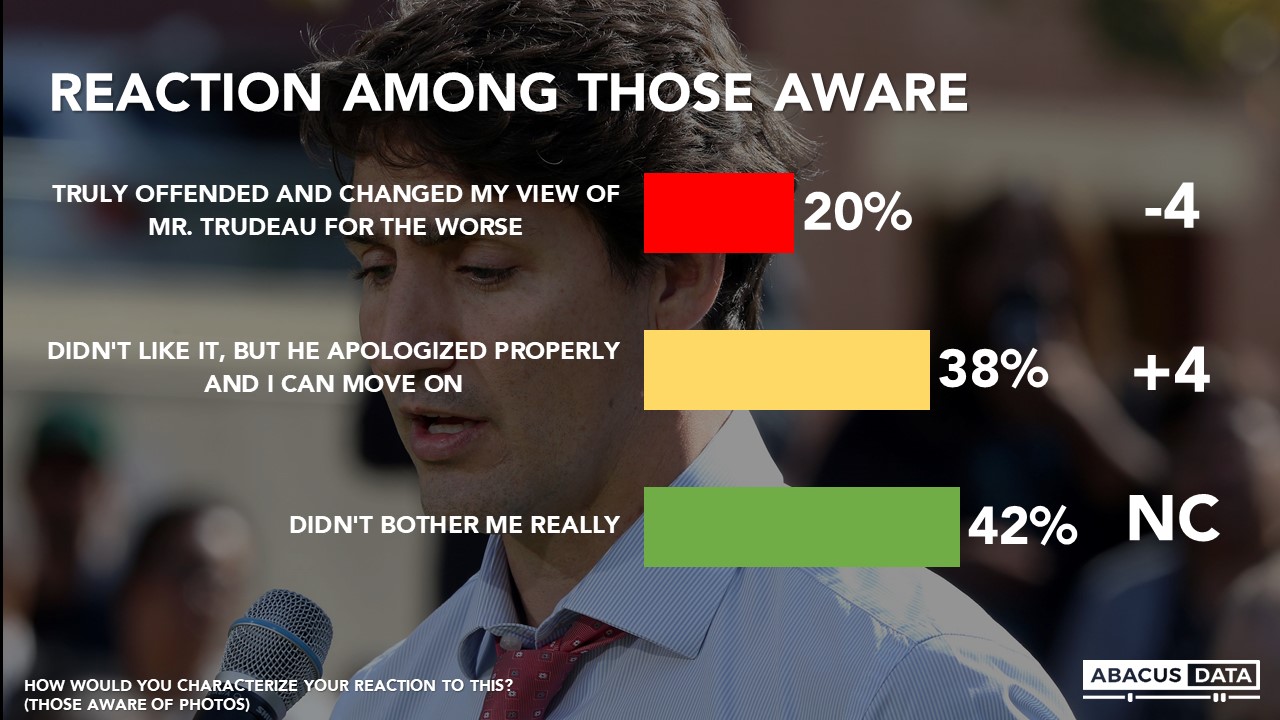
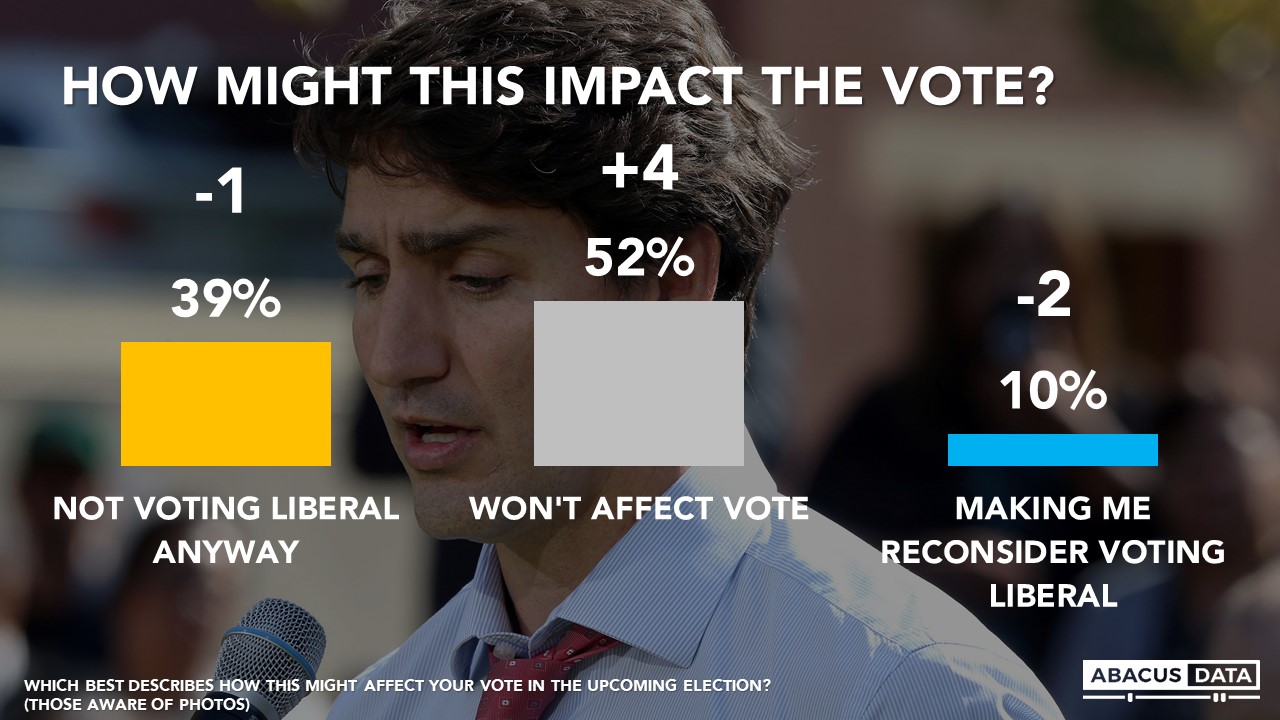
METHODOLOGY
Our survey was conducted online with 1,975 Canadians aged 18 and over from September 23 to 26, 2019. A random sample of panellists was invited to complete the survey from a set of partner panels based on the Lucid exchange platform. These partners are double opt-in survey panels, blended to manage out potential skews in the data from a single source.
The margin of error for a comparable probability-based random sample of the same size is +/- 2.3%, 19 times out of 20. The data were weighted according to census data to ensure that the sample matched Canada’s population according to age, gender, educational attainment, and region. Totals may not add up to 100 due to rounding.

ABOUT ABACUS DATA
We are the only research and strategy firm that helps organizations respond to the disruptive risks and opportunities in a world where demographics and technology are changing more quickly than ever.
We are an innovative, fast-growing public opinion and marketing research consultancy. We use the latest technology, sound science, and deep experience to generate top-flight research-based advice to our clients. We offer global research capacity with a strong focus on customer service, attention to detail and exceptional value.
Contact us with any questions.
Find out more about how we can help your organization by downloading our corporate profile and service offering.
